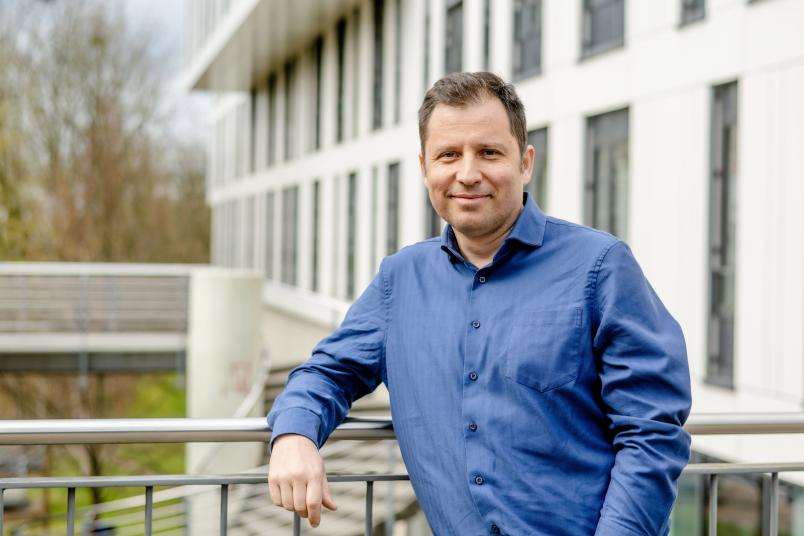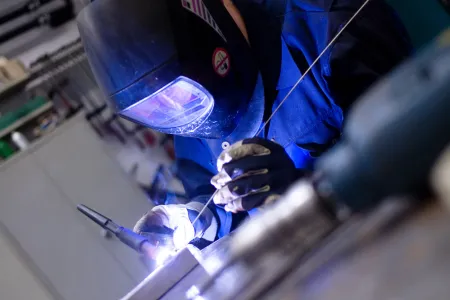
Prof. Dr. Miquel Marques, holder of the Chair of Artificial Intelligence for integrated materials sciences, is involved in the project.
Materials Science
Research Project on Next-Generation Superconductors Starts
International research team awarded multi-million-dollar funding to develop and test next-generation superconductors through artificial intelligence and quantum geometry.
The Kavli Foundation, the Klaus Tschira Foundation, and philanthropist Kevin Wells have launched a joint initiative to advance the development of next-generation superconducting materials: with a multi-million-dollar investment, an international team of scientists will design and test new superconductors based on quantum geometry concepts. Artificial intelligence (AI) will be used to predict unique material properties and structures that could achieve revolutionary levels of superconductivity. Prof. Dr. Miquel Marques, holder of the Chair of Artificial Intelligence for integrated materials sciences at Ruhr University Bochum, Germany, is involved in the project.
Breakthroughs in quantum geometry in 3D materials
The collaboration, led by Päivi Törmä of Aalto University in Finland, is seeking breakthroughs in quantum geometry in 3D materials (QG3D). “The project may lead to new superconductors that function at unprecedentedly high temperatures and deepen our understanding of the role of quantum geometry,” said Törmä regarding the impact of the work.
“We are thrilled to be able to partner with the Klaus Tschira Foundation and Kevin Wells to support this outstanding collaboration”, said Jeff Miller, nanoscience program officer at The Kavli Foundation. “The scientific potential for discovery, regarding the concept of quantum geometry, could offer new paths to superconductivity and other quantum effects. This type of research could have very significant practical outcomes, such as the discovery of materials that reduce the amount of power required for computationally intensive processes”, he remarks.
"To make a meaningful impact, it is often necessary to start with fundamental scientific research. This collaboration will advance the fundamental understanding and application of quantum geometry concepts in quantum materials research, and specifically in superconductivity. With a unique combination of expertise in materials synthesis, experimental analysis, theory, and machine learning, the collaboration is well positioned to make breakthroughs in next generation superconducting materials,” observed Kevin Wells.
Three key barriers must be tackled
The concept of quantum geometry is not new to physics, but it was believed that quantum geometry effects, related to the so-called quantum metric, would not lead to easily observable phenomena in solid-state systems. That belief started to change when Dr. Törmä and colleagues realized that, under correct quantum geometric conditions, wave functions of electrons could theoretically intertwine in interesting ways in solid-state materials, leading to a novel kind of superconductivity. Shortly thereafter, when unexplained new features were observed during experiments on twisted bilayer graphene, quantum geometry arose as a possible explanation for some of the effects.
“To move the quantum geometry field forward, three key barriers must be tackled,” said Dr. Saskia Haupt, Research Program Manager at the Klaus Tschira Foundation. “First, more theoretical work is needed to inform directions to take in quantum geometry research. Second, experiments in 2D materials like graphene need to continue to better characterize quantum geometry phenomena. Third, and perhaps most difficult, 3D materials with quantum geometry effects must be discovered and synthesized, which is where this QG3D project comes in.” The foundation prioritizes research, education, and science communication. In the field of basic research, the foundation’s goal is to support outstanding and creative ideas in mathematics, computer science, and the natural sciences that aim for significant advances in science and have the potential to create lasting societal impact. “While other funders might shy away from projects perceived as too risky, this is precisely where the foundation begins its work”, underlined Haupt.
With this funding, the researchers aim to discover and synthesize new 3D materials with quantum geometry properties. Although such synthesis efforts are a challenge, the payoff could be worth the effort: to observe the predicted effects at high temperatures (including room temperature), high electron densities are needed, and 3D structures are needed to achieve the high electron density. To accelerate the effort, the team will use AI and machine learning methods to help refine the choice of materials to synthesize. Theoretical results and characterization of synthesized materials will inform machine learning algorithms, and iteration will lead to identifying materials with desired quantum geometry properties.
